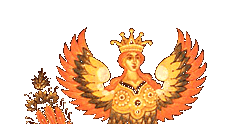Catalogue:Search by:Sale!LoginSubscribe to newsYour E-mail Comes out once a month! We accept PayPal
|
Kholui
About KholuiThe old Russian village of Kholui (located in Ivanovo region) is known for it's remarkable scenic beauty. This unique corner of Russia seems to have been created precisely to astound the world with it's original charm. The clear blue waters of the river of Teza reflect the silvery boughs of the bordering willows and the domes of the white-stone 17th century Trinity Church. In the spring river overflows it's banks flooding the whole district and turning the streets into real canals. Boats are used to get about the village--to kinder-garden, school or work. The high waters stays all of April. Then the land quickly dons it's verdant garb looking more attractive than ever after it's rejuvenating spring "wash" and inspiring the artists to new poetic landscapes. Kholui is also famous for its old history. From times ago past icon painting was a hereditary occupation.
The village's convenient location afforded close links with many towns of the state of Moscow and
promoted the reproduction of the icons for the market.
These were chiefly "popular" icons that required no special workmanship.
Yet there were also pieces executed on a high artistic level boasting magnificent scripture
and virtuoso chasing work on a gold ground. In 1931 the Mstera Branch of an art artel specializing in rug painting was set up in Kholui, and on July 1st, the 1934 it was developed into an art artel. it's more gifted icon painters, among them S.Mokin,K.Kosterin,M.Dobrynin and V.Puzanov-Molev began to paint lacquer objects of papier-mache made after Fedoskino technology. In 1935 a school of team-apprenticeship was opened under the artel which was later re-organized in into Kholui vocational school. Over a thousand specialists for artistic folk crafts were trained in this unique educational establishment. The final emergence of the new Kholui style took place in the 1940's. In those years many works of historical subjects were created by K.Kosterin,S.Mokin and Puzanov-Molev. Kholui art is distinguished for it's more concrete and picturesque character as compared to Palekh and Mstera.It employs a wide range of warm ground colors , with preference for yellows, browns and reds, joined with a sparing ornament. In distinction from Mstera the Kholui landscapes lacks the formers light-colored receding prospects and comes out as an element than underlines and deepens the content; it is often symbolic. Kholui art also depicts figures on a large scale. Kholui miniatures are more realistic, compares to Palekh's and Mstera's ones, but yet more decorative than those of Fedoskino. Their stylistic features were displayed to the best advantage in the landscape genre. The art of Kholui miniature is the youngest of all the Russian lacquer crafts. in 1947 the artel welcomed the first graduates from vocational art school, those who form it's artistic nucleus today: V.Belov,V.Fomin, Nikolay Babrin, B.Tikhonravov, Boris Kiseleov,Nikolay Denisov,A.Kosterin,A.Kamorin. The younger Kholui painters such as Viktor Yolkin,Vladimir Sedov,Alexander Smirnov, Piotr Mityashin, A. Sotskov and N.Shevtsov are working in the finest traditions of the older generation and some of them became teachers in Kholui Art School. |




